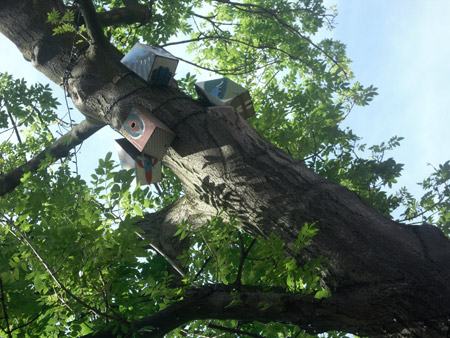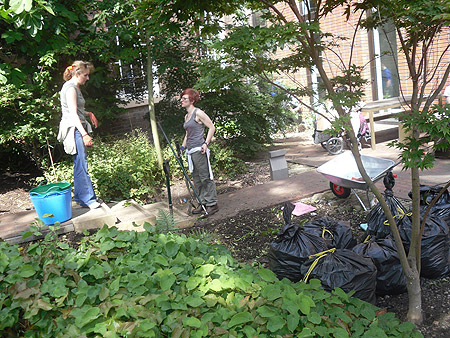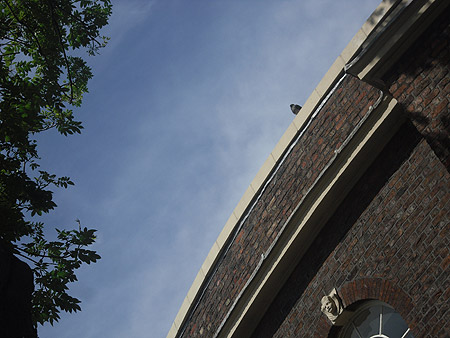
| HOME |
| NERVE |
| REVIEWS |
| ARCHIVE |
| EVENTS |
| LINKS |
| ABOUT US |
| CONTRIBUTORS |
| BACK ISSUES |
| CONTACT US |
 |
 |
 |
Fireweed*
By Sandra
Gibson
Photographs by Geoff Edwards
Growing Creativity at the Bluecoat
July 2012
Enclosed on all sides, the tranquil garden at the Bluecoat gives refuge from the urgent, raucous consumerism grabbing your sleeves outside. Restfully green, this courtyard space contains a lovely fig tree, borders, plants in containers, two island beds with large rowan trees and nesting boxes, seating on various levels and architecture whose balanced design is easy on the eyes. Better still: there is swift and easy access to tea and cake.
There are people who preferred the garden when it was more rampant but now further changes are afoot. Growing Creativity is a 21 week project combining art work and improvements to the garden led by artist-gardener Emily Pitts who has had lots of experience running such projects, including Grozone in Cheshire. Aided by volunteers and involving up to 15 people with learning difficulties or mental health issues the activity takes place on Monday afternoons. The aim is to remove some of the more invasive plants: choisya and viburnum, for example, and replace non-native species such as rhododendrons and azaleas with heathers, loosestrife, ferns and other native plants deemed more in keeping with maintaining a natural balance of biodiversity in the ericaceous land.
A woodland area with stepping stones is envisaged for one of the beds; another has been cleared and planted up with annuals: a good way to create instant impact and influence. Sunflower seeds will be left on the flower heads for the birds and sweet peas will fix nitrogen. As for nasturtiums, anyone who has visited Monet’s garden at Giverny will have a lasting visual memory of this powerfully coloured and prolific plant which cascades vertically and creeps horizontally on minimal attention. Nasturtiums are serious multi-taskers: leaves and flowers and seeds can all go in the salad which then resembles a flower arrangement. Or, if you put them in a blue vase you have an edible masterpiece! Black fly and caterpillars will also thrive on them. This bright pay-back of annual flowers will reward those who planted them and then more permanent plants and bulbs suited to acid soil will succeed them. And this sums the project up: the creation of immediate changes with an eye on the establishment of longer-term commitment to the space by a creative gardener’s group after the initial activity finishes.
Funding for the project comes from the Liverpool Primary Care Trust’s Natural Choices for Health and Wellbeing scheme, also the Gulbenkian Foundation which has an interest in native planting. According to Betty Ritchie, Participation Assistant (Education Department) at the Bluecoat the project is to be extended to drop-in sessions for children between 1.00pm and 3.00pm on Friday afternoons during the school holidays. Betty urgently needs more volunteers because some of the participants need one on one support.
As I left, the dug-up plants were being potted and sold on to the cake-eaters and a man remained deeply engrossed in his meticulous plant drawing. A good time: people following the five ways to wellbeing: connect, give, be active, take notice and keep learning.
To read other Fireweed columns click here
*Also known as Rose Bay Willow Herb, the prolific wild flower called Fireweed, five feet tall with spikes of magenta flowers, cheers the hearts of those whose cityscape has become a bomb site or whose buildings have been cleared by machine. The dormant seeds spring to life after destructive events such as forest or man-made fires, hence the name, Fireweed. This occasional column will celebrate the persistence of wildlife in urban conditions.